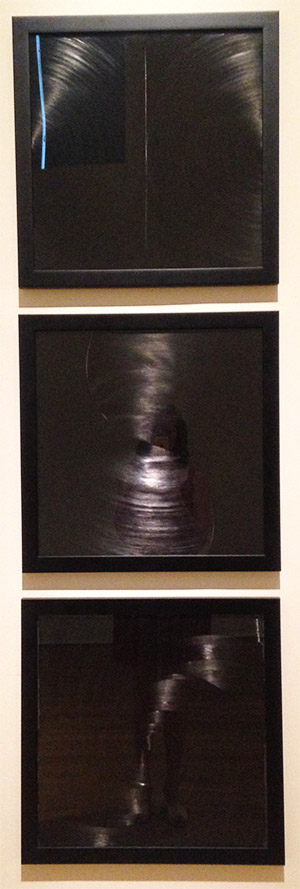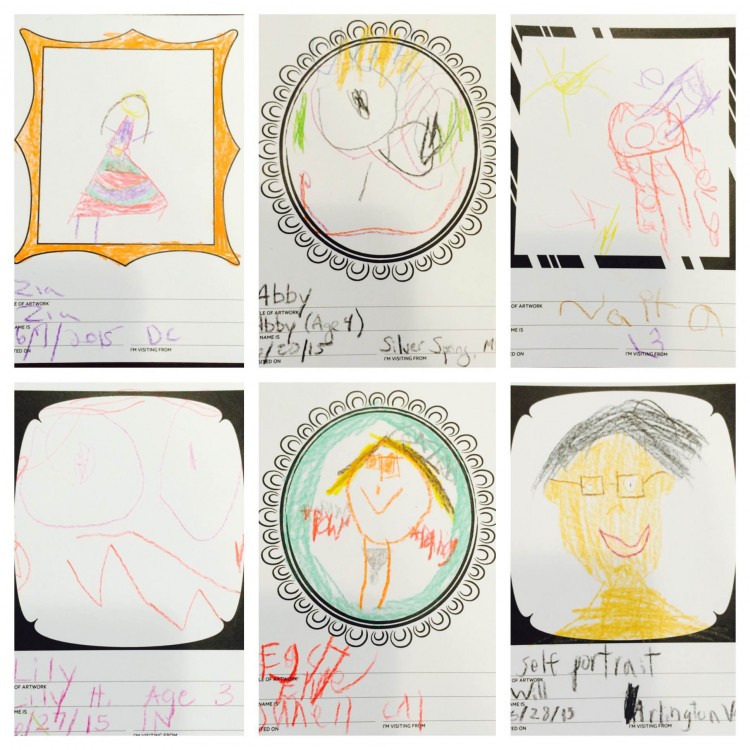
Jae Ko, Untitled (JKD#4), 2011; Untitled (JKD#10), 2014; Untitled (JKD#11), 2014. Promised gift of Linda Lichtenberg Kaplan, 2014. Image courtesy of Marsha Mateyka Gallery, Washington, DC
DC-based artist Jae Ko works in a studio eighty miles outside of the city in St. Mary’s County, Maryland. It is fitting that she works away from the hustle and bustle of the city; when she needs inspiration, she and her partner Jim Sanborn, also an artist, drive around exploring quiet backroads. They seek places of solitude, free of other people. Ko says she does not bring any sketchbooks or supplies with her, and does not take photographs. She simply sits outside and absorbs her surroundings, observing and feeling the sky, the air, and the atmosphere. These moments in nature inspire her work.
Ko’s oeuvre consists mostly of abstract, organic forms made from simple, ephemeral materials. Natural forms she observes in nature return in her art. For example, looking over a cliff onto a winding river below may stick in her memory, and later become evident in the twisting form of a sculptural piece. Her giant sculptural work Force of Nature was featured in an Intersections show at the Phillips in 2011. She views her works as living, and therefore always changing. Ko intentionally works with materials that are subject to deterioration and transformation. She does not strive for perfection, and enjoys watching the effect of time on her art. Sometimes the random “accidents” that happen during her process are what inspire new ideas. Two groups of Ko’s works are now on view at the museum: Untitled (JKD #4), 2011; Untitled (JKD #10), 2014; Untitled (JKD #11), 2014 and Black #22; Black #23; and Black #24, 2014. These works give viewers the chance to see another side of the sculptor, working with flatter, 2-dimensional concepts.
Untitled (JKD #4), 2011; Untitled (JKD #10), 2014; and Untitled (JKD #11), 2014 are currently featured in the exhibition Modern Vision: American Sculptors’ Drawings from the Linda Lichtenberg Kaplan Collection. Lined up horizontally, these three works are composed of calligraphic ink and glue. Ko started these particular drawings in 1998, but only worked on them periodically, unhappy with the result until recently. She started with ink drawings in a spiral shape, and began to apply layers of ink mixed with glue. The build up of the glue-ink mixture added an element of fluidity to the work; as temperature fluctuates, the glue starts to melt or slightly change over time.
Similar in their circular and spiral shapes, Black #22; Black #23; and Black #24, 2014 are now on view as part of Intersections @ 5: Contemporary Art Projects at the Phillips. She had a sketch for this work in her sketchbook for over 20 years before making these drawings. Ko doesn’t think that drawings necessarily need to be pencil to be classified as such, and she considers this work one of her drawings. Made from vinyl cord that Ko ordered online, each one of these series took the artist about a week of intense work to complete. She foregoes the traditional artist supply stores, looking instead for materials that come pre-rolled. The vinyl cord was a local craft store find. Vinyl is very difficult to work with, since it is impossible to make the cord lay flat, but Ko did not want the circular and spiral forms of the work to be perfect anyway. The plastic vinyl is flexible, fluctuating with temperature, and therefore constantly changing with time, like her other pieces.
All of Ko’s work is related. Her drawings maintain the same changing, organic forms that define her sculpture. I’ll be interested to see what becomes of these works in 20 years, when time has taken more of a toll. But for now, I’ll just have to enjoy the drawings on view.
Emily Conforto, Marketing & Communications Intern



